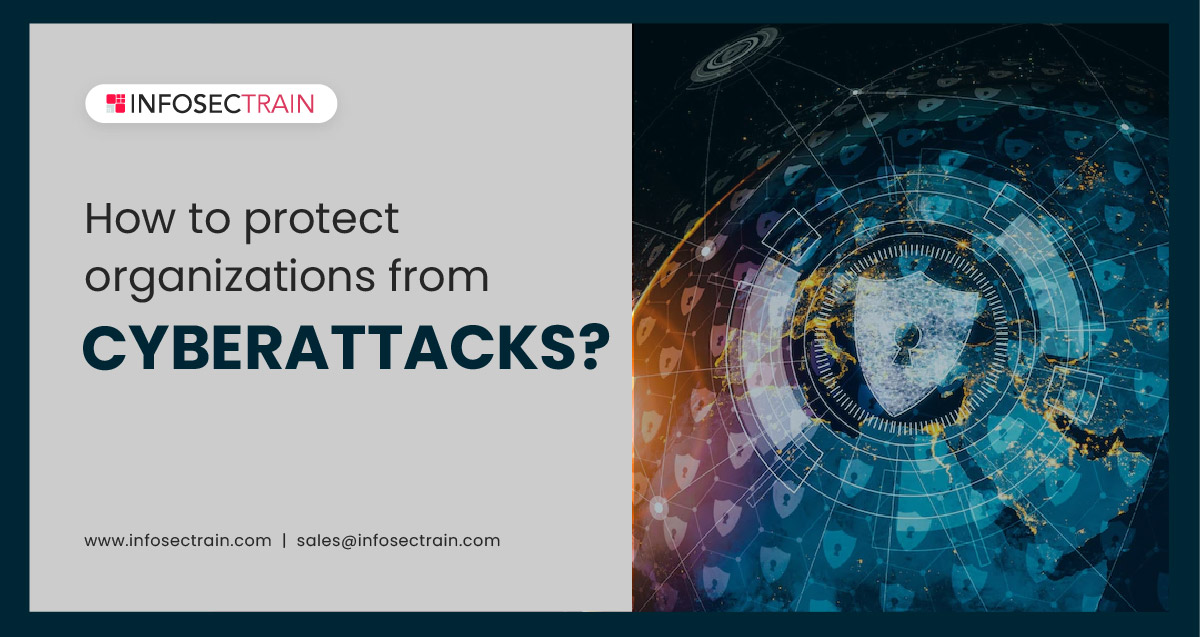How to Protect Organizations from Cyberattacks?

Information Technology (IT) has transformed the way businesses operate nowadays, especially with evolving technologies like cloud computing, artificial intelligence, and machine learning. It is a boon to any organization; however, with the advancement of IT, the threats to the security of businesses are also increasing. We are sure you all have heard of companies paying hefty fines or even going out of business due to a simple system breach. Therefore, cybersecurity is and should be a massive priority for organizations, and thus, having a solid security solution is vitally necessary. So in this article, we will cover cyber security strategies to protect the business.
Top ways to protect your organization against cyberattacks:
Different tactics are needed to protect your company from various cyberattacks. We have highlighted a few options for safeguarding your company’s IT infrastructure and sensitive data. Let us discuss them one by one.
-
- Train your employees:
Employees can be the most significant asset as well as the risk to any organization as a lot of breaches and cyberattacks can occur due to human error. When employees do something as basic as clicking on a malicious link in an email message, they become unwitting contributors. Therefore, providing appropriate training to your employees can help guarantee that they understand what they need to do to protect the data. It is the most effective way to prevent cyberattacks. Remember refreshing their training on a regular basis could assist in lessening this risk. Therefore, organizations must communicate and hold training sessions on a regular basis.
-
- Employee access to the organization’s data and information should be limited:
Organizations should only provide employees access to the systems they require to do their duties. Take prompt preventive action if an employee leaves your organization or transfers to another company. It is good to start by deleting passwords and accounts from all systems and collecting workplace ID badges. Organizations should monitor the use of computer equipment and systems as well.
-
- Strengthen network security:
Attackers need to get a foothold in a network before they can achieve their goals, and the strategies used by cybercriminals to break into networks are growing more sophisticated. Therefore network security is one of the most important steps that organizations should take. Organizations must have a network architecture that prioritizes cybersecurity. They should divide their network into zones based on logical systems and apply strong authentication using individual credentials or personal certificates. They should also have a system monitoring center (such as SIEM) that keeps track of their systems’ relevant logs and events.
Organizations could test their security by using tools like search.censys.io and shodan.io to look for exposed network borders/DMZ. Examine outbound traffic for evidence of malware on the network sending commands to a command-and-control server.
-
- Risk assessment should be a priority:
Rather than being a one-time event, the risk assessment should be a continuous activity. On a monthly, quarterly, and annual basis, companies should collect and evaluate indicators of potential risks.
-
- Keep software up-to-date:
Cyberattacks frequently occur because your systems or software are out of date, thus exposing vulnerabilities. Cybercriminals exploit these vulnerabilities to obtain access to your network, and it is sometimes too late to take precautionary measures after they have exploited them. To combat this, it is a decent idea to invest in patch management systems that will keep track of all of the software and system upgrades that ensure your systems are secure and up to date. Any new application can open the door to a cyberattack if you do not constantly patch and update all softwares on every device used by your employees. Also, you should install operating system updates as new or improved security features are frequently included in these updates. So, keep up-to-date with patches and security updates.
-
- Backup your data:
There is a humongous amount of sensitive data within an organization, and once cybercriminals can corrupt the system, it is difficult to get the data back. So it is always good to backup your database and end-user device, server, and core infrastructure configurations to avoid serious downtime and financial and reputational damage. Multiple back-ups, stretching back six months or longer, are advised.
-
- Organization’s systems should be monitored constantly:
There is nothing like a bulletproof environment, and buying best-of-breed products does not guarantee top-notch security. The only thing that is predictable about security is the unpredictability of the threats it faces. As a result, an organization should focus on having all security mechanisms in place while also ensuring that visibility and monitoring capabilities are in place.
-
- Encrypt your organization’s sensitive data:
Use encryption and keep a copy of your encryption key or password separate from your back-ups in a secure location to protect your data. Sending the key or password to your email recipients is not a good idea, and you should always prioritize proper key management.
-
- Create security policies:
Organizations should develop security policies. This will allow organizations to create and enforce policies and processes for staff to follow, as well as guarantee that they are using IT resources effectively and efficiently. A security policy is more than just a checklist; it is a place where your employees can go when they are unsure of what to do next and how to do it.
-
- Use strong passwords:
For each account, each employee should use a strong and unique password. If a malicious attacker gains access to your computer, phone, or other systems, using the same password for everything can be harmful. Furthermore, passwords should be changed frequently to ensure a high level of protection against external and internal threats.
-
- Use Multi-Factor Authentication (MFA):
Cybercriminals can easily crack a single password and gain access to your organization’s systems; therefore, it becomes hard to secure your organization from cyberattacks. Your organization should employ Multi-Factor Authentication (MFA). MFA refers to security features that require a confirmation code to log in to a system or app. In order to access your sensitive information, if your password is stolen, they will need access to another password or device. As a result, whenever possible, utilize MFA.
-
- Make use of firewalls:
One of the most effective strategies to defend yourself against any cyberattack is to put your network behind a firewall. A firewall system will stop any brute force attacks on your network and systems before they can cause any damage.
These are only a few methods to ensure security against cyberattacks. To know more about ways to protect your company against cyberattacks, you can refer to the video given below:
How to start cyber security strategy in your organization step by step process
Final words
Nowadays, businesses are concerned about cybersecurity on a proactive basis. They use a variety of strategies to safeguard their IT infrastructure and data. They are increasingly hiring professionals who can assist them in protecting their businesses from cybercriminals and their nefarious purpose. Therefore, cybersecurity has become a lucrative career opportunity for individuals in the IT sector. If you desire to be one of the highest-paid in-demand IT professionals, InfosecTrain is there to assist you in your path. We are committed to assisting you with world-class training opportunities in order to prepare you for the domain’s lucrative career responsibilities. So enroll now to leverage the benefits!




 1800-843-7890 (India)
1800-843-7890 (India) 
